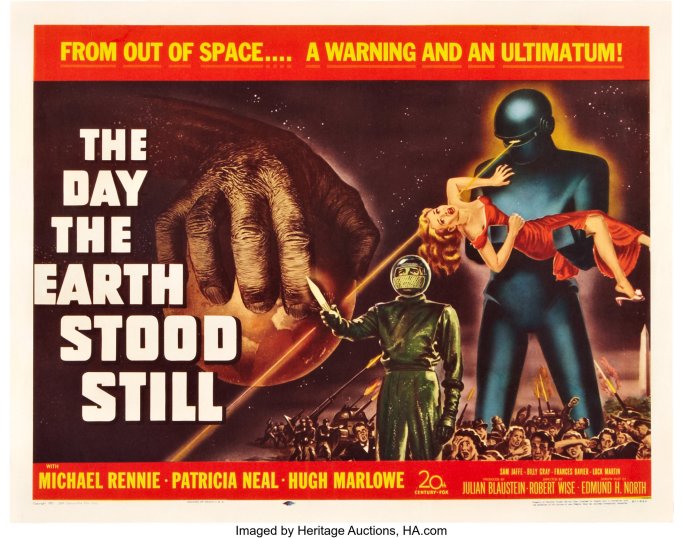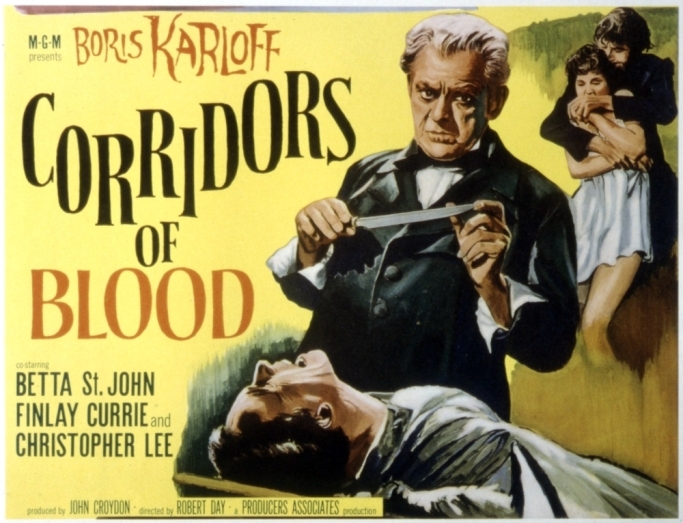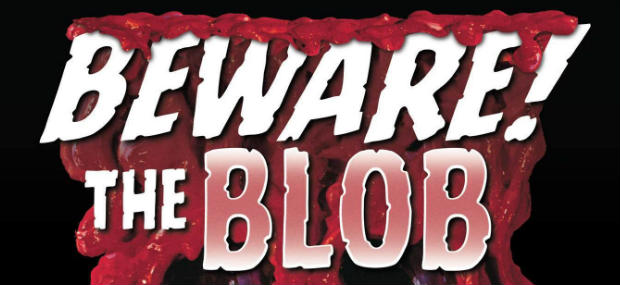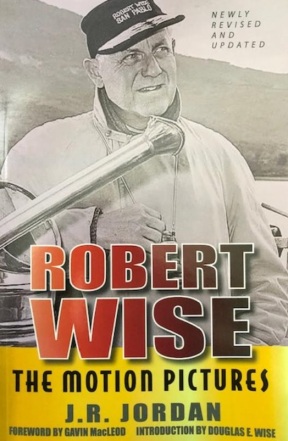The following was originally published on February 3, 2013. I’ve included updated links on the current home media availability.
“Klaatu Barada Nikto”. It is one of the most iconic film quotes of all time, appearing in countless forms of pop culture since it first appeared onscreen in 1951. And while the 1950s gave us many great sci-fi films, The Day the Earth Stood Still is perhaps the most popular, not just for genre fans but for cinema fans of all ages.
There are several key reasons why The Day the Earth Stood Still is remembered so fondly and has never wandered far from the forefront of the science fiction film genre. From the opening seconds, our ears are blessed with the music of Bernard Hermann and the iconic sounds of the Theremin. While the Theremin is heard in many other sci-fi and horror films, I believe it was never used better than it was here. You are immediately transported into the world of the movie. And as the credits finish and our story unfolds, the music shifts into a unique melody as we witness radar stations tracking an unidentified flying object. It’s a spring day in Washington D.C. as the object lands, causing a panic among the people. The panic turns to curiosity as the military and police arrive. The doors open and a man emerges, holding an object in an outstretched hand. The object expands and someone shoots the object, injuring the man. Then, a large robot emerges to express the power it possesses. A slit rises on its helmet, allowing a laser beam to destroy rifles and obliterate tanks. The man orders the robot to stop before he is captured and taken away by the military.
What an amazing start to the movie. We soon learn the man is indeed a representative from another world. His name is Klaatu and his mission is to get us to stop our violent ways. Stop the endless battles and wars or they will force us to stop. Klaatu is played by Michael Rennie (Lost in Space, Batman, Assignment Terror), a perfect choice due to his exotic facial features and tall build. He was also a relative unknown at the time, which allowed you to stay in the cinematic world rather than be pulled out of it. Had Spencer Tracy or Claude Rains been given the part, as was discussed at various times of pre-production, the effect would not have been the same. Rennie is able to make us believe he is an alien to our world. Knowledgeable of some things yet very inquisitive of others. He marvels at the Lincoln memorial and the concept of “going to the movies”. He has a childlike innocence when holding a music box. And through all of this, he remains calm and collected, even as the military is looking to find and, eventually, kill him.
As Klaatu escapes and opts to live among the humans, he takes up residence at a boarding house. He immediately befriends young Bobby Benson (Billy Gray, Father Knows Best) and his mother Helen (Patricia Neal). It comes as no surprise that Helen’s boyfriend Tom Stevens (Hugh Marlowe, Earth vs. The Flying Saucers) is quickly jealous and eventually finds a way to turn Klaatu over to the military. The relationship between Bobby and Klaatu becomes like that of a teacher and student. However, when Bobby discovers his secret, he becomes scared and, unfortunately, his character disappears from the movie, allowing his mother to take center stage. I’ve always felt cheated about this. I so wanted to see at least one final scene with Bobby and Klaatu, where Bobby understands and no longer fears him. And yes, that was Frances Bavier in the boarding house, better known as Aunt Bee from The Andy Griffith Show, if only for a line or two of dialogue. Finally, we have Sam Jaffe as Professor Barnhardt, the one scientist who knows who Klaatu really is. Barnhardt tries to gather other scientists so Klaatu can share his warning message. Jaffe’s unique face and mannerisms were perfect for the role of the eccentric scientist. Sadly, this would be Jaffe’s last work for many years as his name was brought into the infamous communism scare of the 1950s.
We come to learn the robot’s name is Gort and he is even more deadly than we can imagine. Klaatu reveals Gort and others like him are essentially galactic police officers. Gort can destroy Earth and Klaatu wants to ensure that doesn’t happen. Thus, the immortal words “Klaatu Barada Nikto”. These are the words that will stop Gort and Klaatu gives them to Helen in case he can’t. Gort was one of the more believable robots of this era. There were two versions of the suit in order to cover up the zippers, which more or less work except for a couple of scenes. Gort was played by a 7’7’’ Grauman’s Chinese Theatre doorman named Lock Martin. However, despite his size, he was very weak. In scenes where he is holding Klaatu or Helen, it’s either a dummy or wires being used to help. These wires are indeed very visible now in our high definition world. But I am also glad they haven’t been removed digitally. Watching these classics with all their warts and imperfections showing is just another reason why we love them.
Director Robert Wise delivers an amazing film that stands stall among his other genre films, such as The Andromeda Strain and Star Trek: The Motion Picture. He marvelously creates the world we see develop. It’s our world and the events, while fantastical in some ways, are also very realistic. The anti-war message was very prevalent thanks to the personal feelings of screenwriter Edmund North (Patton, Sink The Bismark). However, they really haven’t aged. True, we aren’t worried about blowing ourselves up with bombs, but we still all feel we could be living better lives. We want all wars to end and North gives us a message here that still hits home today. His script is based on a short story written by Harry Bates. Farewell to the Master was first published in 1940 in Astounding Science Fiction. Sadly, Bates was paid a mere $500 for his iconic ideas and died in relative obscurity, never even seeing his rewritten stories published. These stories are now presumed lost forever.
I highly recommend this classic and the 2008 Blu-ray is a necessity on the shelf of any film or science fiction fan. The movie never looked better and the extras will keep you busy as you learn about the men behind the movie, the production and even about the flying saucer phenomena. You can hear an audio presentation of the original short story as well. The only thing missing is the 1954 Lux Radio Theatre presentation, which starred Michael Rennie and Billy Gray, reprising their roles. If you haven’t seen this classic, step away from the computer screen right now, find it and enjoy it. Just be sure to remember the words “Klaatu Barada Nikto” if you run into Gort along the way.
Robert Wise: The Motion Pictures
 A revised edition of author J.R. Jordan’s book, Robert Wise: The Motion Pictures, is now available and is a perfect way to spend some summertime afternoons. Every chapter is a thoughtful analysis of one of his films, starting off with The Curse of the Cat People (1944) and ending with his final film, A Storm in Summer (2000). The amazing read includes a foreword by actor Gavin MacLeod and an introduction by Douglas E. Wise, Robert’s nephew. I highly recommend it, especially if you enjoy any of his classic films. You might even discover some hidden gems that will leave you seeking out more of his films, which is the perfect way to keep his memory very much alive. It’s currently available on Amazon in hardcover and paperback editions, and gets the Monster Movie Kid seal of approval.
A revised edition of author J.R. Jordan’s book, Robert Wise: The Motion Pictures, is now available and is a perfect way to spend some summertime afternoons. Every chapter is a thoughtful analysis of one of his films, starting off with The Curse of the Cat People (1944) and ending with his final film, A Storm in Summer (2000). The amazing read includes a foreword by actor Gavin MacLeod and an introduction by Douglas E. Wise, Robert’s nephew. I highly recommend it, especially if you enjoy any of his classic films. You might even discover some hidden gems that will leave you seeking out more of his films, which is the perfect way to keep his memory very much alive. It’s currently available on Amazon in hardcover and paperback editions, and gets the Monster Movie Kid seal of approval.









 A revised edition of author J.R. Jordan’s book, Robert Wise: The Motion Pictures, is now available and is a perfect way to spend some summertime afternoons. Every chapter is a thoughtful analysis of one of his films, starting off with The Curse of the Cat People (1944) and ending with his final film, A Storm in Summer (2000). The amazing read includes a foreword by actor Gavin MacLeod and an introduction by Douglas E. Wise, Robert’s nephew. I highly recommend it, especially if you enjoy any of his classic films. You might even discover some hidden gems that will leave you seeking out more of his films, which is the perfect way to keep his memory very much alive. It’s currently available on
A revised edition of author J.R. Jordan’s book, Robert Wise: The Motion Pictures, is now available and is a perfect way to spend some summertime afternoons. Every chapter is a thoughtful analysis of one of his films, starting off with The Curse of the Cat People (1944) and ending with his final film, A Storm in Summer (2000). The amazing read includes a foreword by actor Gavin MacLeod and an introduction by Douglas E. Wise, Robert’s nephew. I highly recommend it, especially if you enjoy any of his classic films. You might even discover some hidden gems that will leave you seeking out more of his films, which is the perfect way to keep his memory very much alive. It’s currently available on 


 A revised edition of author J.R. Jordan’s book, Robert Wise: The Motion Pictures, is now available and is a perfect way to spend some summertime afternoons. Every chapter is a thoughtful analysis of one of his films, starting off with The Curse of the Cat People (1944) and ending with his final film, A Storm in Summer (2000). The amazing read includes a foreword by actor Gavin MacLeod and an introduction by Douglas E. Wise, Robert’s nephew. I highly recommend it, especially if you enjoy any of his classic films. You might even discover some hidden gems that will leave you seeking out more of his films, which is the perfect way to keep his memory very much alive. It’s currently available on
A revised edition of author J.R. Jordan’s book, Robert Wise: The Motion Pictures, is now available and is a perfect way to spend some summertime afternoons. Every chapter is a thoughtful analysis of one of his films, starting off with The Curse of the Cat People (1944) and ending with his final film, A Storm in Summer (2000). The amazing read includes a foreword by actor Gavin MacLeod and an introduction by Douglas E. Wise, Robert’s nephew. I highly recommend it, especially if you enjoy any of his classic films. You might even discover some hidden gems that will leave you seeking out more of his films, which is the perfect way to keep his memory very much alive. It’s currently available on 

 A revised edition of author J.R. Jordan’s book, Robert Wise: The Motion Pictures, is now available and is a perfect way to spend some summertime afternoons. Every chapter is a thoughtful analysis of one of his films, starting off with The Curse of the Cat People (1944) and ending with his final film, A Storm in Summer (2000). The amazing read includes a foreword by actor Gavin MacLeod and an introduction by Douglas E. Wise, Robert’s nephew. I highly recommend it, especially if you enjoy any of his classic films. You might even discover some hidden gems that will leave you seeking out more of his films, which is the perfect way to keep his memory very much alive. It’s currently available on
A revised edition of author J.R. Jordan’s book, Robert Wise: The Motion Pictures, is now available and is a perfect way to spend some summertime afternoons. Every chapter is a thoughtful analysis of one of his films, starting off with The Curse of the Cat People (1944) and ending with his final film, A Storm in Summer (2000). The amazing read includes a foreword by actor Gavin MacLeod and an introduction by Douglas E. Wise, Robert’s nephew. I highly recommend it, especially if you enjoy any of his classic films. You might even discover some hidden gems that will leave you seeking out more of his films, which is the perfect way to keep his memory very much alive. It’s currently available on 

